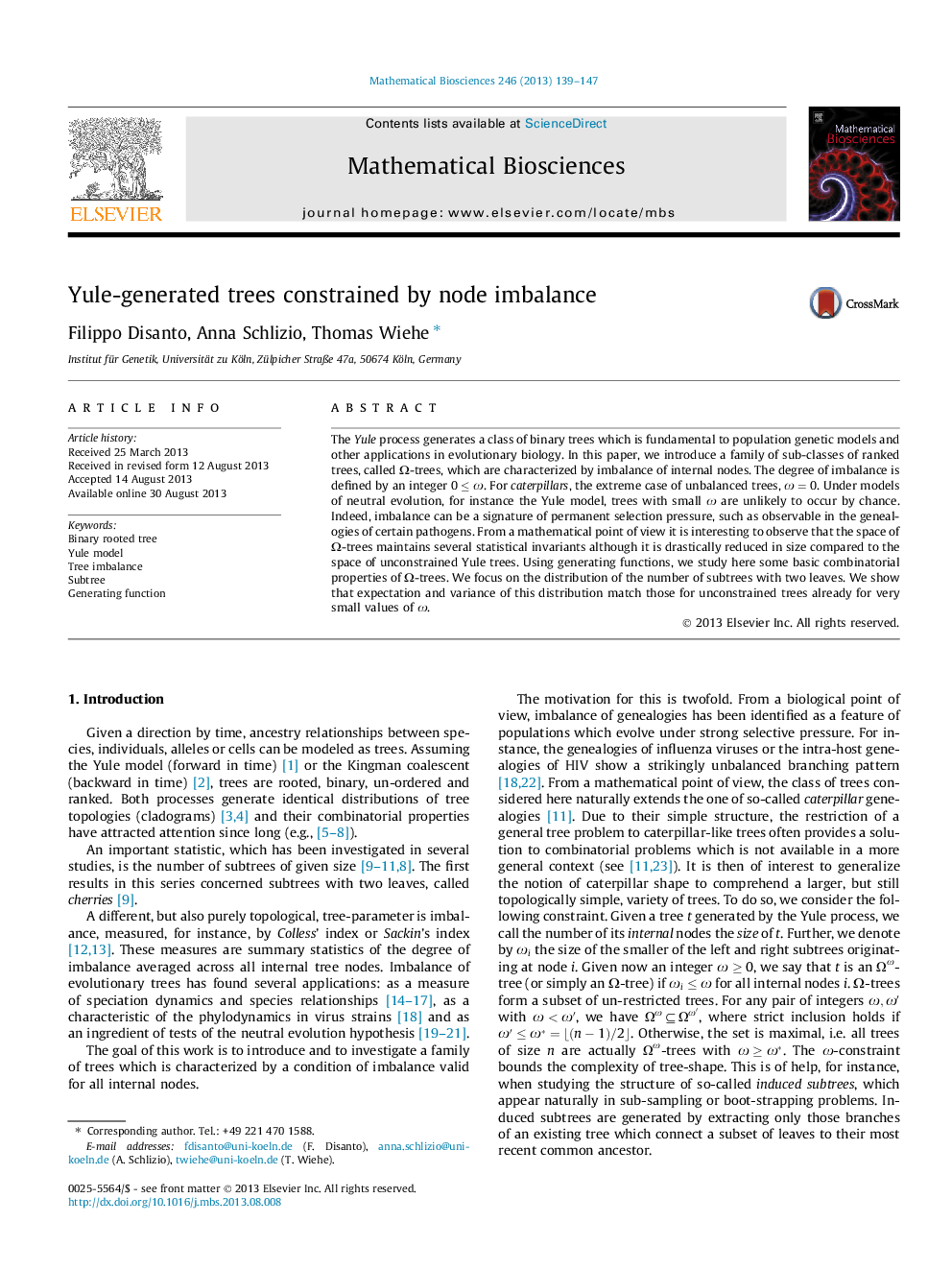| Article ID | Journal | Published Year | Pages | File Type |
|---|---|---|---|---|
| 4500157 | Mathematical Biosciences | 2013 | 9 Pages |
•We investigate the topological structure, in particular imbalance, of Yule trees.•We define tree subclasses, characterized by an imbalance parameter “Ω”.•We generalize generating functions, introduced before, to enumerate Ω-trees.•We show that Ω-trees are sparse, but maintain important statistics of Yule trees.•Ω-trees may be important for search algorithms and population genetic applications.
The Yule process generates a class of binary trees which is fundamental to population genetic models and other applications in evolutionary biology. In this paper, we introduce a family of sub-classes of ranked trees, called Ω-trees, which are characterized by imbalance of internal nodes. The degree of imbalance is defined by an integer 0≤ω0≤ω. For caterpillars , the extreme case of unbalanced trees, ω=0ω=0. Under models of neutral evolution, for instance the Yule model, trees with small ω are unlikely to occur by chance. Indeed, imbalance can be a signature of permanent selection pressure, such as observable in the genealogies of certain pathogens. From a mathematical point of view it is interesting to observe that the space of Ω-trees maintains several statistical invariants although it is drastically reduced in size compared to the space of unconstrained Yule trees. Using generating functions, we study here some basic combinatorial properties of Ω-trees. We focus on the distribution of the number of subtrees with two leaves. We show that expectation and variance of this distribution match those for unconstrained trees already for very small values of ω.
